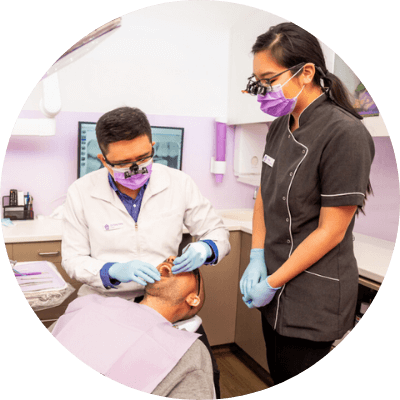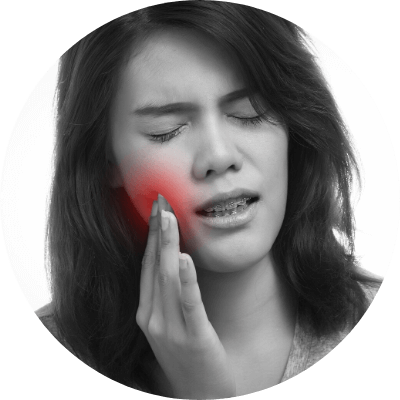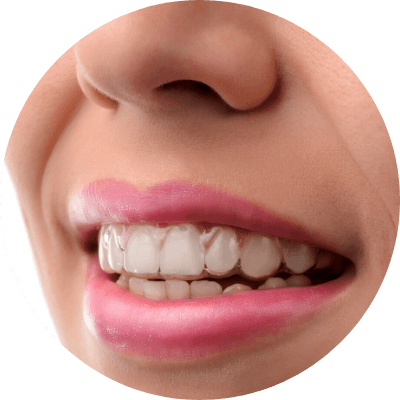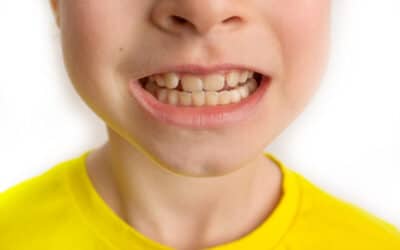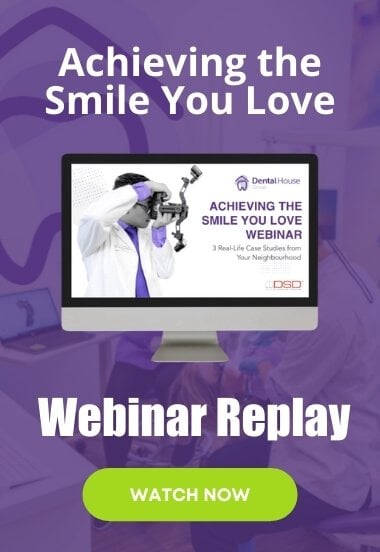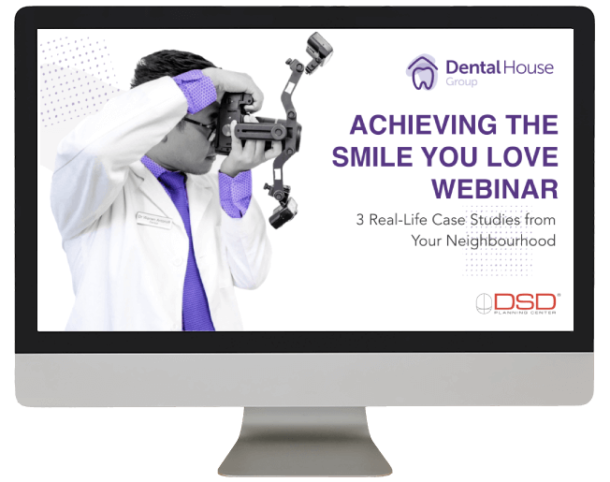Teeth & Bones in Space: Stem Cells, Space Stations & Regeneration
Teeth & Bones in Space: Stem Cells, Space Stations & Regeneration

All research begins with a question. Like what do teeth and bones have to do with space?
More than you may think.
From the importance of calcium absorption to the dangers of osteoporosis, keeping track of how our bones and teeth respond in outer space is an important part of keeping astronauts healthy in the great gravity-less, and infinite unknown.
In space, bones experience unique challenges. Without the force of gravity to push against, they begin to atrophy and deteriorate. This can lead to serious and ongoing health problems for space explorers, like osteoporosis and muscle weakness.
The basic unit of a bone is the osteon, which is made up of osteocytes (bone cells) and an organic matrix. The matrix is made up of collagen and other proteins, as well as minerals such as calcium phosphate.
Osteocytes are connected to one another by tiny channels called canaliculi. These channels allow nutrients and other molecules to pass between the cells, keeping them healthy.
The collagen in bone’s matrix gives it strength, while the minerals give it hardness. Together, these make bones strong yet flexible enough to withstand the forces they experience every day.
Because teeth are much stronger than bones, they’re less affected by short space trips, but as humankind reaches for the stars, or at least Mars, there’s a great deal to know about how they will react on these voyages. The more pressing issue is how gums will react in long distance space flights – after all gums can be very susceptible to inflammation, and if the gums play up, the teeth get affected too.
One scientist found it impressive that oral biologists and orthodontists can move teeth to another place. Microgravity can make teeth move too. Intriguing thoughts began, about what it was that told the cells to break down bone at the front of the tooth and then fill the cavity left by that movement.
What kind of chemical communication was happening to make this possible?
In microgravity, body fluids don’t flow evenly. Pressure builds up in certain areas, causing teeth to shift and become misaligned. Teeth are subject to gravity by themselves and frequently move forward on their own. It can take years for them to move, but most commonly they’re pushed forward by wisdom teeth.
However, genetically, teeth may be overcrowded. If a tooth is extracted or lost, teeth in the vicinity will be subject to gravitational pull, and often, over time the adjacent tooth continue moving forward to fill that gap over time.
NASA has the real concern of accelerated bone loss from microgravity. Whether or not it was possible to stop cells from breaking down bone. Administrator Michael Griffin asked, “How can we make bone cells stop what they are doing up in space?”
These questions about cell communication are fundamental to bone strength. How it changes under circumstances like ageing, and how a microgravity environment dictates conditions that have cells behave differently. To be able to find answers to how space disrupts cell communication, whether that is responsible for bone strength loss, and if overriding this perturbed cellular communication can prevent this decline, is pivotal. Not only for future mission long duration space travel and being aboard the International Space Station (ISS), but for longer, healthier lives on Earth.
Stem cells may offer a solution to this problem. These versatile cells have the ability to regenerate tissue, and researchers are working on ways to use them to help bones regrow in microgravity conditions. Space stations are already using advanced regenerative techniques to keep their crew members healthy, and this technology is going to become more important as we send humans deeper into space.
The investigation may also provide evidence that bone loss from osteoporosis and the fragility fractures of osteopenia are causes of ageing, not merely symptoms of it.
As we age, stem cells gradually lose the ability to divide and produce new cells as the process known as ‘senescence’. The effect of microgravity on stem cells is not yet fully understood, but what it is clear is that they are affected by the change in gravity.

In space, there is an increase in the rate of cell death, a decrease in the ability of stem cells to regenerate and changes in gene expression and cell structure.
These changes can lead to the development of cancer and other diseases.
In one experiment, scientists found that human bone marrow stem cells were less likely to survive and proliferate in microgravity. Another study found that mouse embryonic stem cells grown in microgravity showed changes in gene expression and cell structure. These changes could potentially lead to problems with tissue regeneration and the development of cancerous tumours.
Studies have shown that stem cells can help counteract loss of bone and muscle mass by stimulating the growth of new bone and muscle tissue. Mice exposed to microgravity for 28 days had increased levels of a protein called osteogenic regulatory factor 2 (OFR2). This protein is involved in the development of new bone cells. The mice also showed increased satellite cells – the stem cell that repairs damaged muscle tissue.
These findings suggest that stem cells could be used to help astronauts maintain their bone and muscle mass, and teeth and gums during long-term missions in space. It is expected that stem cells would be used to treat any physical emergency that may occur during a mission, including dental issues, disease and injury.
One risk associated with stem cell research is cells not developing into the intended tissue or organ, and instead proliferate somewhere else. In addition to that is the possibility of transplanted stem cells not being compatible with the recipient’s body, and rejected by the immune system. There is also a small chance of developing cancer from the uncontrollable division of stem cells.
These risks, however, are becoming much better understood and therefore reduced. Stem cell research continues to hold great promise in the treatment of many diseases and injuries for both astronauts on long-term space missions, and people here on Earth.
One major benefit is the ability to regenerate tissue and organs – a treatment for injuries sustained in space, and for sufferers of degenerative diseases. The production of new blood cells and immune system cells would help astronauts fight infections in space, and could also be used to treat many diseases, including cancer.
Stem cell research also helps the development of new therapies, and individualised drugs that target specific diseases in a specific genetic environment.
It is important to continue research on the effects of microgravity on stem cells so that we can better understand how to protect astronauts from the harmful effects of spaceflight.
The knowledge to develop innovative interventions to halt bone loss is a future global health contribution that would benefit more than one billion people suffering bone and oral diseases.
Tooth removal, or tooth loss is the most common cause of dental bone loss. Normally, jawbone is strengthened by the active pressure of chewing. Where there is no longer a tooth, there is no pressure.
For a missing tooth, typically 25% of the surrounding bone will be lost within a year. Bone simply shrinks and resorbs into the body, continuing to deteriorate over time, causing pain and discomfort.
In Earth-based medicine, bone clinicians to use x-ray-based technology take an image, and from that the amount of bone minerals is measured without having to remove any bone. However they are not measurements that can detect whether or not a bone will fracture.
A previous International Space Station study used research technology called ‘QCT’ to measure bone mineral in the hip bones of astronauts before and after spaceflight. The study then used a computational tool that engineers developed to test the integrity of complex structures, like bridges and cars. It estimates the force of the load causing the hip to fracture by applying a virtual mechanical load to the computerised model of the hip until the structure “fails.” The information is used to identify tasks that could lead to a pelvic fracture in space.

That’s a scenario so terrible it should be added to the game of ‘Would You Rather…’ Would you rather be eaten by an eight metre anaconda, or break both hips in space?
The Japan Aerospace Exploration Agency (JAXA) is also examining the molecular mechanisms behind ageing associated conditions.
Along with bone loss occurring more rapidly in microgravity, is muscle atrophy.
A factor in ageing mammals was identified as calciprotein particles (CPPs) in previous research.
CPPs induce chronic inflammation and systemic tissue damage – a possible mechanism of accelerated ageing in space.
Countermeasures to target CPPs would help protect astronauts on future missions and change the future of ageing on Earth.
Innovative ways to evaluate changes in bone tissue, and the impact that has on bone strength are needed to better monitor, understand and protect skeletal health.
There’s a whole new generation of scientists and technologies and scientists getting to the bare bones of our bare bones.
The first-ever private sector oral care experiment for ISS is designed to learn more about the bacteria that affect oral – and therefore overall – health, in a microgravity environment.
The growth and metabolism of oral biofilms, which take the form of dental plaque that lead to cavities and gum disease is the focus of the study.
To simulate bacterial growth on a tooth-like surface, space crew will use microfluidic devices co-developed by researchers at the College of Engineering at UNLV, and Colgate-Palmolive microbiologists.
Results will be compared to control experiments conducted on the ground so that that new parameters can be set in nanotechnology centred treatments for gum disease and regenerated oral health.
It is expected that more than half the world’s population will benefit from new therapies that should become available within the next decade.
The great promise and value in teeth is in not just having them, but for stem cell researchers.
Particularly baby teeth – for the abundance in number and quality, of the stem cells they hold.
Most stem cells are difficult to extract. They’re found fewer in number, and buried deep into the adjacent tissue to similar-looking cells surrounding it. Stem cells found in baby teeth are readily extractible and plentiful.
Interestingly, dental stem cells appear to be among the fastest replicating stem cells discovered.
Dental stem cells can be preserved for future medical treatments, and recent research suggests they can be used to regrow teeth lost to decay.
Pre-clinical findings propose that a stem cell mixture will replace the current filling composites that will stimulate the dental pulp into producing its own replacement tissue.
Not pulp fiction – pulp fact. One day we will be able to regenerate not only our own teeth and bones, but soft tissue as well.
Understanding how teeth and bones behave on a cellular level in space is an exciting and promising endeavour that will change the way astronauts live and work.
The first dentanaut has Elon Musk’s dentist as the current forerunner. While stem cells and regenerative medicine remain in their early stages,
One step for man, one giant leap for global health. One tooth in space, many more teeth in space, preferably healthy ones with safe and alive owners.
Overall, stem cell research is a revolution in medicine, whether performed on earth por in the great beyond.
All research begins with a question. All good research ends with a new beginning.
Note: All content and media on the Sunbury Dental House website and social media channels are created and published online for informational purposes only. It is not intended to be a substitute for professional medical advice and should not be relied on as health or personal advice.
Services Mentioned
Related Articles
Some Sweet News For Diabetes Sufferers With Gum Disease
Diabetes type 2 is a scourge for sufferers and those with it know that well. Here is some sweet news for diabetes sufferers with gum disease. A new study performed at the University of Buffalo School of Dental Medicine made some helpful findings in this regard. The...
Bruxism In Children: Is It Influenced By Screen Time And Sugar?
Children gnashing & grinding their teeth asleep in bruxism – a scene from a horror movie. Overstimulation of sensitive minds…
Let The New Year Bring New Commitment To Your Oral Care
If you can be inspired to make one new year’s resolution this year let it be for your dental health. Let the New Year bring new commitment to your oral care in 2024 and beyond. This is no mere dentist’s selfish wish but a call for an understanding about just how...
Having A Smart Mouthguard Is A Life Changing Game Changer
In early 2023, the top league of professional players in Australasia, the NRL, along with Football Australia, acknowledged before a Senate committee the link between head trauma and serious neurodegenerative disease. Representatives from the major Australian contact...


